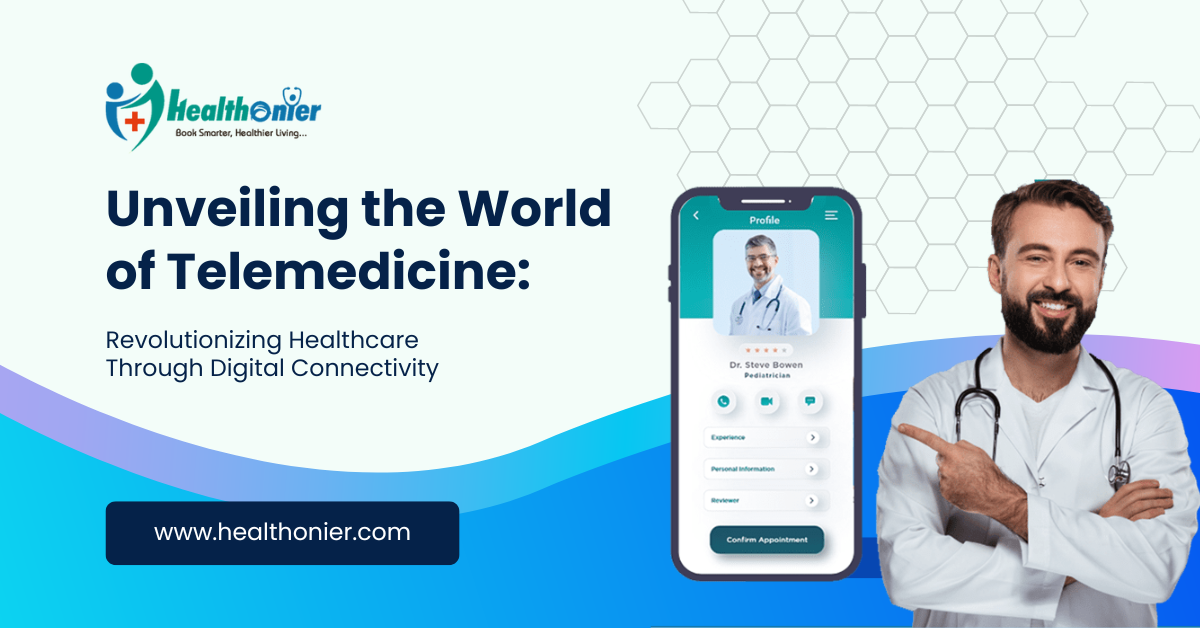In the dynamic landscape of healthcare, Telemedicine has emerged as a transformative force, bridging the gap between patients and healthcare providers through digital channels. This article explores the intricacies of Telemedicine, delving into its definition, evolution, and critical components.
What is Telemedicine?
Definition of Telemedicine: Telemedicine refers to delivering healthcare services through digital communication technologies, allowing patients and healthcare professionals to connect remotely.
Evolution and History: The roots of Telemedicine can be traced back to early telegraph communication, but its modern form has evolved alongside advances in technology, such as the internet and video conferencing.
Key Components of Telemedicine
Communication Technologies
- Video Conferencing: Enables real-time visual consultations between patients and healthcare providers.
- Audio Communication: Facilitates remote discussions through phone calls or voice messaging.
- Messaging and Chat: Allows asynchronous communication, enhancing flexibility.
- Remote Monitoring Devices:These devices collect and transmit patient data, providing real-time information to healthcare professionals for remote assessment.
- Electronic Health Records (EHR):Digital records streamline the sharing of patient information, fostering efficient and comprehensive virtual care.
Types of Telemedicine
- Synchronous Telemedicine
- Real-Time Consultations: Live patient interactions with healthcare providers.
- Virtual Visits: Digital appointments for non-emergency medical issues.
- Asynchronous Telemedicine
- Store-and-Forward: Patient information, such as images or test results, is sent to a healthcare provider for later review.
- Messaging and Email: Communication occurs at different times, allowing flexibility for both parties.
Applications of Telemedicine
- Teleconsultations: Remote medical consultations facilitate timely access to healthcare services, overcoming geographical barriers.
- Remote Monitoring: Continuous tracking of vital signs and health metrics through wearable devices ensures proactive healthcare management.
- Teletherapy and Counselling: Mental health support is provided through virtual sessions, making therapy more accessible and convenient.
- Second Opinion Services: Patients can seek expert opinions from specialists worldwide, expanding their healthcare options.
- Education and Training: Telemedicine platforms are used for training healthcare professionals and disseminating medical knowledge.
Benefits of Telemedicine
- Increased Access to Healthcare: Telemedicine breaks down geographical constraints, providing healthcare services to remote and underserved areas.
- Cost Savings: Reduced travel expenses and improved efficiency contribute to overall cost savings for patients and healthcare providers.
- Convenience for Patients: Patients can access healthcare services from the comfort of their homes, minimizing disruptions to daily life.
- Improved Continuity of Care: Seamless sharing of electronic health records ensures a comprehensive and continuous patient care experience.
Challenges and Considerations
- Regulatory and Legal Issues: We are navigating complex regulatory frameworks and addressing legal concerns related to telemedicine practices.
- Privacy and Security Concerns: We are ensuring the confidentiality and security of patient data in the digital realm.
- Technological Barriers: We address technology access and literacy disparities to ensure equitable telemedicine adoption.
- Patient Acceptance and Adoption: It is overcoming resistance and fostering patient trust in embracing virtual healthcare options.
Future Trends in Telemedicine
- Integration with Artificial Intelligence: We are enhancing telemedicine platforms with AI for personalized healthcare recommendations and diagnostics.
- Expansion of Remote Monitoring Technologies: We incorporate advanced remote monitoring devices for comprehensive health tracking.
- Policy and Regulatory Developments: We are adapting and refining regulatory frameworks to keep pace with the evolving telemedicine landscape.
- Enhanced Interoperability: We are improving the seamless exchange of information between different healthcare systems and platforms.
In conclusion, Telemedicine is a revolutionary force in modern healthcare, offering unprecedented access, convenience, and efficiency. As technology advances, the integration of Telemedicine with artificial intelligence and the ongoing refinement of regulatory frameworks promise a future where healthcare is genuinely borderless and patient-centric. The time is ripe for healthcare providers and policymakers to actively shape and embrace telemedicine’s future.
Read More: Revolutionizing Healthcare Delivery: Unveiling the Potential of Telemedicine Platforms for Doctors


